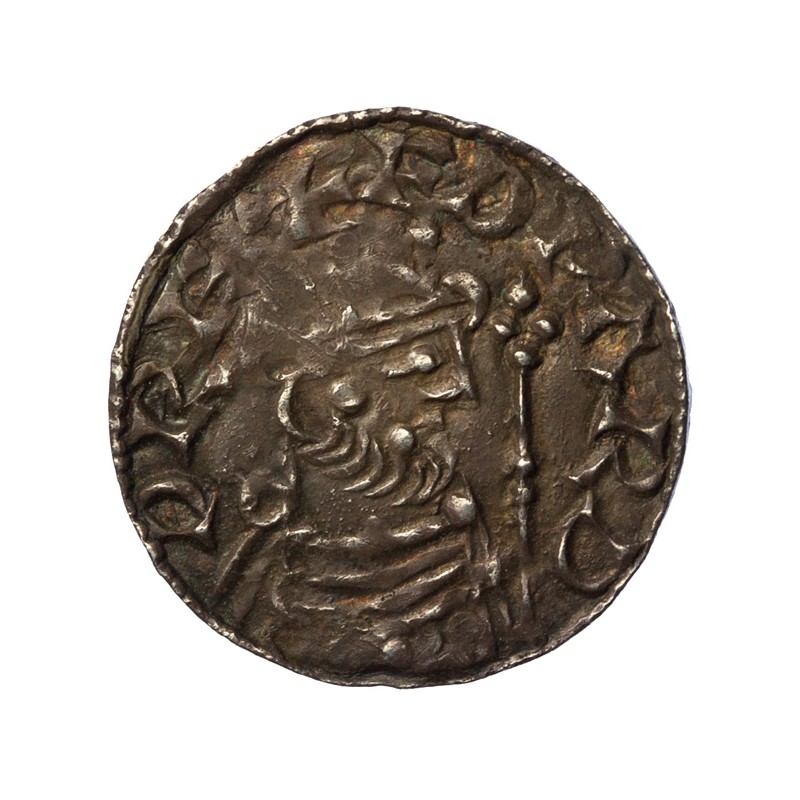






Edward The Confessor Silver Penny
Hammer Cross - lines cut in dies
Blachere on Thetford
1.37g 19.3mm
Spink - 1182
North - 828/1
Obverse:
EDPARDD REX. Crowned and bearded bust r. with sceptre in front.
Reverse:
BLACERA ON ÐET. Small cross voided with each limb terminating in an incurved crescent.
The reverse slightly corroded otherwise very fine and toned. A rare and interesting variety. Same die pair as SCBI 42 South-Eastern Museums - Number 1546-7 and Carson plate XIII - Number 12.
"In type 8 various curious markings occur either on obverse or reverse. Coins of Aelfwine have on the reverse two lines roughly parallel to the cross, or a radial line in one of the quarters. On coins of Blacere the first and third quarters of the reverse are also divided by a radial line but the two lines together do not form a true diameter. On another coin of Blacere one straight line cuts through the first and third quarters but is slightly off centre. A coin of Sumerlede, too, has a fixed radial line in the second quarter. On the obverse of a coin of Godric, a raised bar cuts across the face of the portrait. One of these coins is from the Carlyon-Britton sale and the comment there is that these marks are certainly official. The crude and careless mark on the obverse die of a coin might indicate a defacement and cancellation of the die, but, although some of these marks may be due to die-flaws, the radial marks have been placed with care in one quarter of the reverse. This and the fact that these marks occur for a good few moneyers of this particular type alone indicate that these marks had a purpose and meaning, although Mr. H. Alexander Parsons maintains that these do not represent intentional variation. The varying forms of mark and the execution which is careful but not competent may mean that the marks were added by the moneyers themselves, perhaps to mark off the coins struck after say the receipt of some fiscal instruction. The weight of the marked coins does vary from that of the unmarked (20.5 compared with 19.5 gr.), but the variation is so small and the number of specimens so few that this variation is probably only coincidental and of no import. Certainly nothing relating to a fiscal instruction at this time can be traced. It is known that a fee was paid by the moneyers to the king when the type was changed and a new die issued. These markings on the dies may indicate that the moneyer had paid some interim fee for the prolongation of the use of the dies."
Carson, R. A. G. (1949). 'The Mint of Thetford', The Numismatic Chronicle and Journal of the Royal Numismatic Society, Sixth Series, Vol 9(3/4), pg 201.
Ex S. & K. Harl Collection [bt A & S. Giles, 1999]
Ex W.H. Pheatt Collection, Part II, BDW Auction, 6 Sep 1995 - Lot 619
Ex G.V. Doubleday Collection, Glendining Auction, 6 Oct 1987 - Lot 520 (part)
Reportedly also ex Duke of Argyll Collection.
Data sheet
Specific References